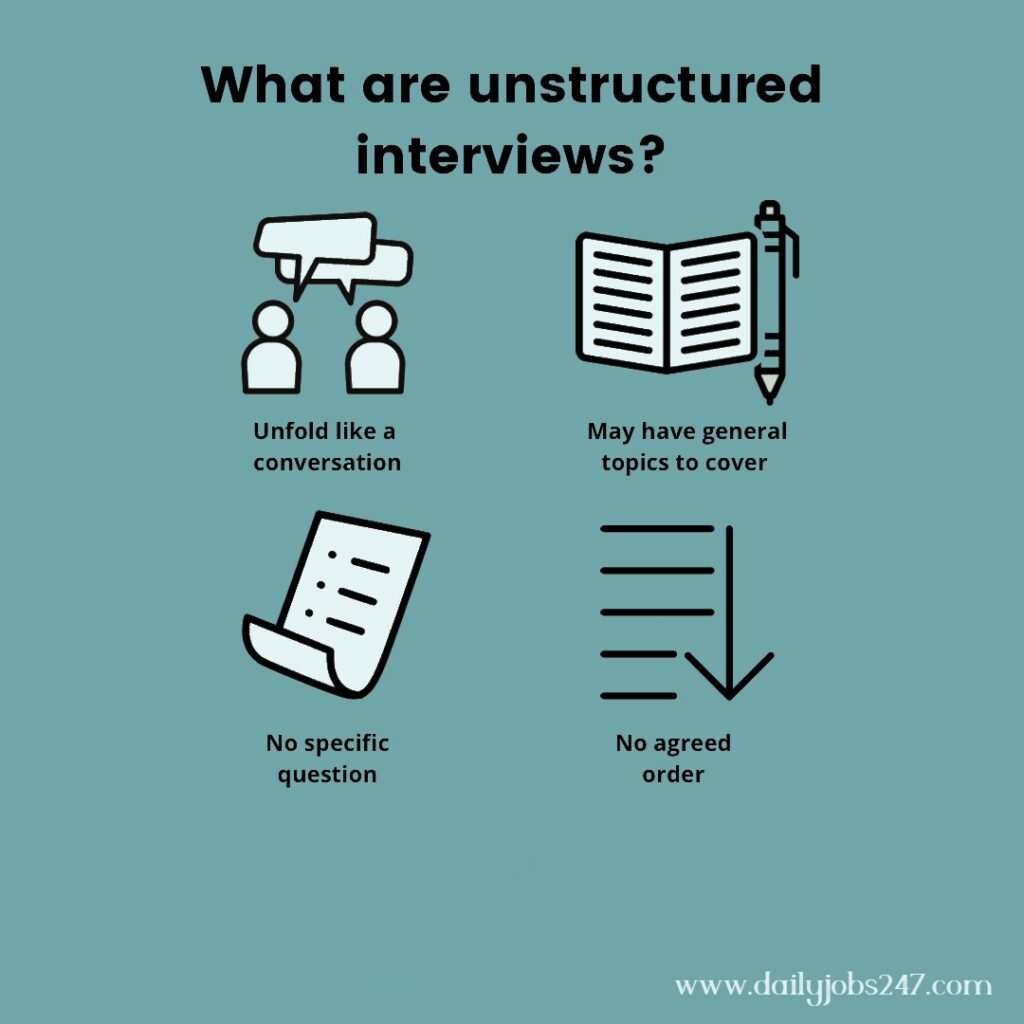A structured interview is a standardized approach to interviewing where you put a question on the same predetermined pattern to all applicants in the identical order and you rate them with a uniform scoring method. This technique is almost two times as effective as the traditional interview.
Now think about your usual interview process for a minute. Do you have a list of common interview questions from which you choose a limited example on the spot, a semi-structure interview? On the other hand, do you select the unstructured interview, doing no groundwork at all? In the absence of a pre-determined scoring method, your understanding of the applicant’s answer may often be based on intuition. The slack flow can even pose lawsuit risks, as unsolicited questions won’t have been evaluated for legality in advance.
A structure interview works uniquely. Here, we provide a step-by-step guide to converting informal discussions with applicants into dependable, structured processes.
What makes a structured interview?
The prearranged questions you ask through a structured interview correlate to important job competencies attained from a comprehensive job description. The questions can be likewise situational or behavioral. They rate the answers with a specific scoring method with a range of justifiable answers. If there is more than one interviewer, the team should reach a compromise on questions and the understanding of answers.
This technique displays greater validity and reliability than the unstructured interview, reducing the likelihood of a bad hire. It still does not forecast future job performance like work models or cognitive tests do, but it has the added benefit of face-to-face contact. Structure interviews also make sure that you can reduce discrimination issues since all applicants are treated fairly and given the same chances to showcase their skills. And, it takes time and expense but its returns far balance its costs.
How do you conduct a structured interview?
For conducting a structured interview, you have to follow the five steps
Step 1 for conducting structure interviews, you must do a Job analysis. You must do a custom job analysis to match skills to job responsibilities for a separate position. Data from this process is essential to designing a structured interview. It can help you to improve an informative and professional job ad, salary ranges as well as structured interview questions. Apart from selection, it can also help towards your organizational needs and training.
Step 2 for conducting structure interviews defines requirements, you must have a list of requirements required for the position, first need to provide a full description for each one. For example, what are communication skills? We all understand it in the abstract but you need to specify what this means for a specific position. This will be a huge benefit for later when you will have to establish a behavioral or grading scale.
Step 3 is developing a lead and probing questions. Questions for an interview should develop with care, if possible they will be developed with the help of an expert. Suppose you will have to evaluate around one core attribute, you can develop a set of ten structured interview questions. The number is largely up to you however; you can ask more or less if you have time.
Both behavioral and situational questions are job-related. You can choose great questions from current lists and classify them according to the requirements you want to evaluate. If you have situations that are anticipated to happen commonly in a position, you can include them in the process. Take care, to tie up them to specific essence that has been specified from the job analysis and has experts test them if possible.
Probing questions aim to clear points or attain more information about the applicant’s answers and should also be predetermined.
Step 4 is to determine the grading scale for a structure interview. The existence of a scoring system is very significant to make sure objective decisions. You can choose the common scale of five to eight points ranging from low to high. The key here is to correctly define the scoring altitudes.
Step 5 is to conduct the interview. A structured interview may be difficult for an interviewer. It is best if there is a guide that employing managers can use as a source to understand and go after the process. Some training may be essential for those unusual with the structured model.
Characteristics of a structured interview
Following are the characteristics of a structured interview
- For structure interviews we uses a standardized procedure of analysis.
- It is a quantitative process of noticing.
- A structured interview is easy to duplicate.
- This sort of interview is back-to-back in nature.
Advantages of Structured Interview
Data Collected through a structured interview is easier to analyze and more objective unlike the data collected through an unstructured interview. This is because a structure interview needs the interviewee to provide relevant and brief answers to the questions, unlike an unstructured interview.
Moreover, structured interviews can be used to choose information from a huge data sample of the target population, unlike an unstructured interview. Because of the uniformity of a structure interview, the interview process is much easier unlike that of an unstructured interview.

Disadvantages and limitations of structured interviews
The disadvantages of structured interviews indicate the benefits of the unstructured interview. The end proceeds more like a discussion and permits for a personal association between interviewer and interviewee. Contrarily, the structure interview may appear impersonal and cold without permitting applicants to digress from the established interview process. The interviewer can still be pleasant and help the applicant to calm but the lack of spontaneity makes the atmosphere harsher and does not allow exploration of interesting aspects that may come up.
Furthermore, the structure interviews, for all their preparation and standardization, are still not resistant to interviewer biases. The thingness of a panel of interviewers may gentle their effect, but it does not help to make the procedure any more pleasant for the applicant.
However, for positions of responsibility or more senior roles, it is a good thought to use structure interviews that can reduce the risk of a bad hire. Do not forget, that selection should carry different types of analysis. Leave the interview as a final stage and include tests, work samples, and other methods to craft a complete, dependable hiring process.


